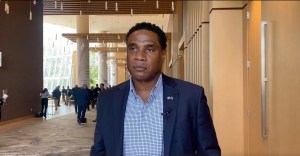Utah looks to data to help serve homeless population
States across the country are turning to data to drive their citizen services and improve government decision-making. In Utah, data could be the key to helping serve the homeless.
That’s part of the focus for Mike Hussey, Utah’s chief information officer, who told StateScoop in April that the state is looking to use predictive analytics to serve Utah’s homeless population. The state reported 1,810 homeless individuals in 2016, an increase from 1,798 in 2015.
On the technology side, the state is looking to share data between the state and its counties as a way to make more thoughtful decisions for assisting that population, Hussey said.
“We’re looking at ways of sharing data between the state and the counties, and aggregating that unstructured data and being able to share that with the counties and make some decisions,” Hussey said. “Those are some things that we’re looking at right now.”
In Utah, that collaboration is enhanced by the state’s centralized IT structure, Hussey said. Despite the centralization, though, each agency in the state has an IT director that helps align technology efforts underway in the Department of Technology Services with the individual priorities of each agency.
“We rely heavily on those IT directors,” Hussey said. “I meet personally with all of the agency directors, just to get a finger on the pulse of things that are going on in the agency.”
In addition, Hussey looks outward to local government, and also to other states.
“We listen and then go back and implement,” Hussey said. “From the bottom of the organization all the way up through, we’re always listening. We’re not supposing that we’ve got it all figured out. We’re certainly a listening ear from all aspects within the agency and from other states.”
In addition to helping serve the homeless population, Hussey also said the state could use data to help with recidivism and serving the prison population down the road.
“How do we help with recidivism within our prison population?” Hussey said. “Lots of opportunities with data, and lots of areas where it all comes together.”


